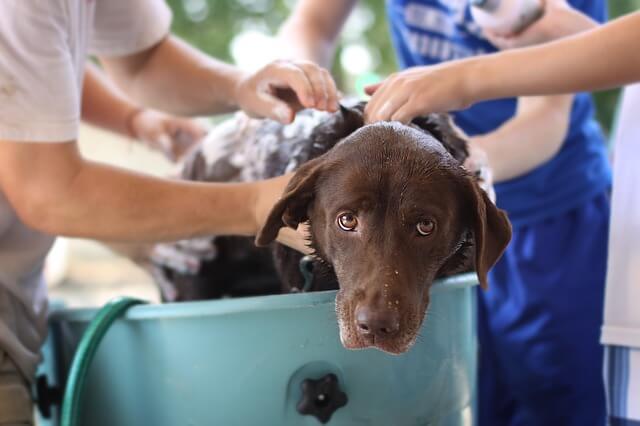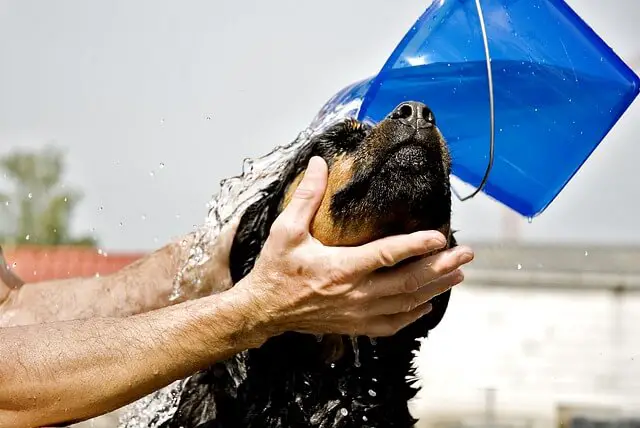What Kind of Food Do You Feed Dogs With Demodex
Demodex in Dogs: Causes, Symptoms & Treatment
Have you ever seen a video of stray dogs being rescued and healed from terrible skin disease? Well, in most cases, those stray dogs had demodex mange. There are two types of skin diseases that fall under the mange category - sarcoptic and demodectic (demodex). The most common one is demodex. If you're worried about your dog's skin and overall health, and you worry they might develop mange, here are a few things you should know about this condition, its symptoms, and its treatment.
What is demodex in dogs?
The easiest way to understand demodex is this - it is a mite infestation that has gone out of hand. A healthy dog's immune system can control the number of mites that live on the dog's skin. However, if the dog's immune system becomes compromised for some reason, these parasites can grow in numbers. There are two types of mites that can cause mange, and the one we will focus on today is Demodex canis.
What causes demodex in dogs?
As we already briefly mentioned earlier, demodex mange is caused by parasitic mites called Demodex canis . These parasites live in hair follicles in dogs, and if you look at them under a microscope, you will notice they have cigar-shaped bodies with eight legs. These parasites are always present under the dog's skin. In fact, many humans have them as well. However, a healthy immune system can keep them in check and prevent them from causing any harm.

If a dog has an undeveloped immune system, or their immune system gets weakened by other diseases, the mite's numbers might rise. Demodex, or red mange, are most common in puppies (undeveloped immune system), stray dogs (poor diet causes immune system weakening), and senior dogs with compromised immune systems.
How can I know if my dog has demodex?
Most dog owners will notice something weird with their dog's skin. If you believe something suspicious is going on, you should call your vet and let them know what you've noticed. Not many owners know how to diagnose demodex in dogs, so the best thing to do is get a confirmation from your vet. You can learn demodex symptoms and make an educated guess about your dog's skin problems.
Demodex symptoms
The first thing your vet will look for is symptoms. They will examine your dog and get a clearer picture of what might be bugging them. Once they finish their preliminary exam, they can start looking for the best treatments and possible causes. Here are the most common demodex symptoms in dogs;
- Small patches of hair loss
- Inflammation and redness of the skin
- Oily skin
- Skin crusting
- Swelling paws
- Face or head rubbing
When demodex starts to appear on a dog, you might think it is simply a small patch of hair loss due to rubbing. However, if the hair loss starts around the dog's eyes, it can be the first sign of demodex in dogs.

How is demodex in dogs diagnosed?
The most common way vets diagnose demodex in dogs is through skin scrapings. The vet will take a few deep skin scrapes and analyze them under the microscope. The diagnosis is confirmed once they notice an unusually large number of Demodex canis mites in the scrape. If the dog doesn't respond to treatment, the vet can order a biopsy.
How will demodex affect my dog?
Dog owners worry about their dogs, and learning their dog has a parasitic infestation that causes problems to the skin is certainly not easy. That's when we all want to know how a disease will affect our dogs. In the case of demodex, the most likely effect will be hair loss. It will start around the dog's eyes and gradually appear in scattered patches across the dog's body. If the condition is left untreated, it can progress from localized to generalized demodectic mange. The good news is that this condition won't itch too bad.
How is demodex in dogs treated?
The best treatment approach will be determined by the stage of the disease (localized or generalized) and your vet. If your dog has localized patches of hair loss and the vet confirmed demodex, the most likely treatment will be a topical solution. The two active ingredients used for that are imidacloprid and moxidectin.
In the case of generalized mange, your vet will recommend a bath and shampooing with a special dog shampoo that will kill these mites. It is recommended you wash your dog with a shampoo that contains benzoyl peroxide, which will open and flush the dog's hair follicles.
VET TIP: In the case of generalized demodex, it is possible the dog has secondary skin infections. If that happens, additional antibiotic treatment might be needed.
How dangerous is demodex in dogs?
The good news is that demodex is rarely fatal. However, it can be fatal if it is left untreated. The disease will develop until it affects the whole skin area. If that happens, skin thickening and bacterial infections will follow. Those things combined can kill a dog. However, if the owners take care of the dog, the disease is rarely allowed to develop so much. Most cases are easily treatable, especially if the owners react fast.
How likely is the disease to reoccur?
The disease may reoccur once the dog gets over demodex, but it is relatively rare. The dog's immune system will recover and keep these mites in check. Puppy's immune system will fully mature between 12 and 18 months, and at that time, it shouldn't be a problem to keep these mites from causing trouble.
Is demodex in dogs contagious?
The good news is that you and the rest of your pets are safe from demodectic mange. Even if you or your other pets get in contact with a diseased dog, your healthy immune systems will simply eliminate the mites that might cross.
World Dog Finder team

Source: https://worlddogfinder.com/blog/dog-health/demodex-in-dogs
0 Response to "What Kind of Food Do You Feed Dogs With Demodex"
Post a Comment